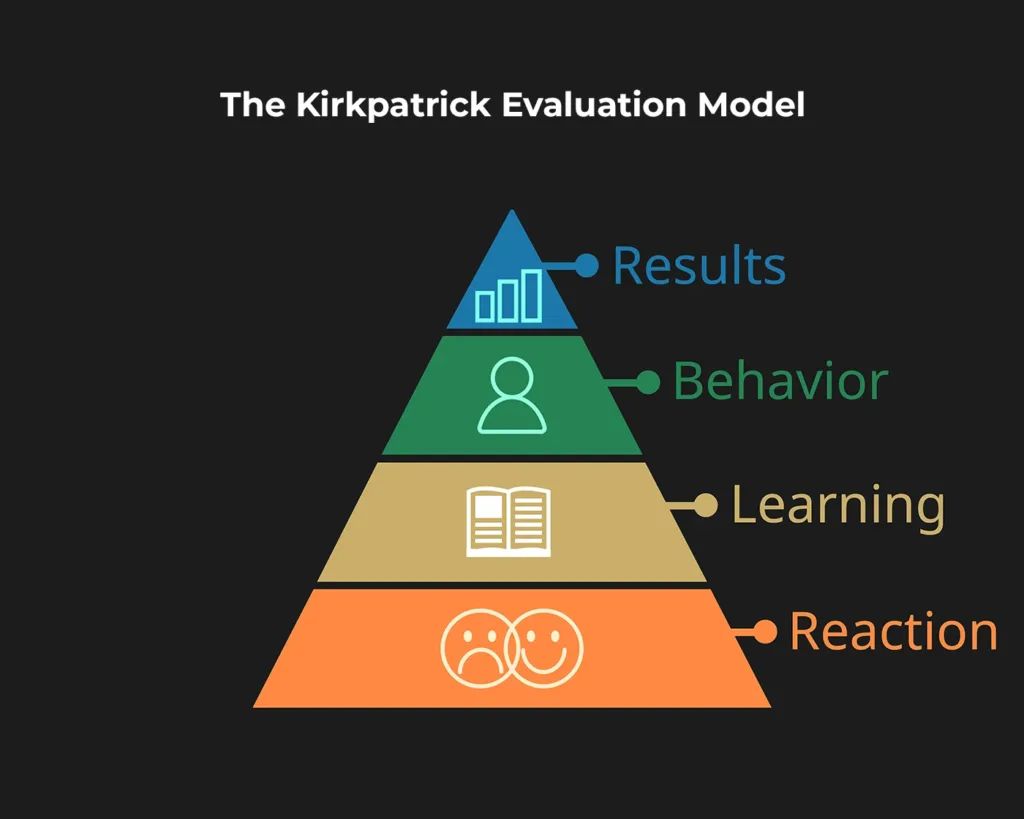
Organizations are investing heavily in employee development programs in 2025. But without proper evaluation metrics, how can leaders determine whether these investments are truly driving results?
Measuring the effectiveness of training programs ensures organizations can fine-tune learning strategies, enhance employee performance, and maximize return on investment (ROI). And leveraging robust evaluation frameworks is more crucial than ever to remain competitive in a rapidly evolving business landscape.
Why Tracking Training Evaluation Metrics Matters
Tracking training evaluation metrics helps organizations:
- Identify skill gaps and areas for improvement.
- Justify training expenditures and optimize budgets.
- Enhance employee engagement and retention.
- Align learning initiatives with business objectives.
- Continuously improve training content for better outcomes.
Without measurement, training efforts may lack direction, leading to wasted resources and unfulfilled learning objectives.
How to Measure Training Effectiveness
Tailoring Assessments to Specific Skills
To accurately evaluate the development of specific skills, assessments should:
- Align directly with learning objectives and key competencies.
- Use real-world scenarios and case studies relevant to job roles.
- Incorporate practical demonstrations, role-playing, or hands-on tasks.
- Provide a mix of multiple-choice, open-ended, and performance-based evaluations.
- Include peer and self-assessments for a comprehensive perspective.
By designing assessments that mirror actual job responsibilities, organizations can ensure meaningful measurement of skill acquisition and application.
To assess whether training programs are achieving their intended goals, organizations can employ a mix of qualitative and quantitative measurement techniques:
- Pre- and Post-Training Assessments – Conducting knowledge checks before and after training sessions helps gauge improvement and knowledge retention.
- Employee Feedback and Surveys – Gathering input from employees about the training experience provides insights into engagement, satisfaction, and areas for enhancement.
- Observational Evaluations – Supervisors and managers can assess how employees apply newly learned skills in real-world scenarios.
- Performance Metrics – Tracking key performance indicators (KPIs) such as productivity, error rates, and efficiency levels can highlight training impact.
- Business Outcomes – Analyzing business performance indicators, such as increased sales, customer satisfaction, or reduced operational costs, can reveal the broader impact of training initiatives.
The Kirkpatrick Evaluation Model: A Proven Framework
One of the most widely used methodologies for measuring training effectiveness is The Kirkpatrick Evaluation Model. This four-level framework ensures a comprehensive analysis of training outcomes:
Reaction: Did participants find the training engaging, relevant, and useful? Surveys and feedback forms can provide insights at this level.
Learning: What knowledge or skills did employees gain? Pre- and post-training assessments can help measure learning outcomes.
Behavior: Are employees applying their newly acquired skills in the workplace? Observational evaluations and manager feedback can measure behavioral changes.
Results: How has training impacted business goals? Examining KPIs, employee performance, and organizational growth helps determine the overall effectiveness of the program.
How Much Measurement Makes Sense in 2025?
With advancements in AI-driven analytics and real-time tracking, organizations in 2025 can measure training effectiveness more efficiently than ever. However, the key is to strike a balance—overanalyzing every detail can lead to analysis paralysis. Instead, companies should:
- Focus on the most relevant metrics that align with business objectives.
- Use automation tools to streamline data collection and analysis.
- Ensure evaluation efforts do not overwhelm employees or hinder productivity.
- Prioritize continuous improvement rather than excessive reporting.
By leveraging the right measurement strategies and frameworks like The Kirkpatrick Model, organizations can ensure their training programs are impactful, efficient, and aligned with business goals.
As we move further into 2025, smart evaluation practices will empower companies to maximize their workforce potential and drive sustainable growth.
Upskilling and reskilling are critical for success. And tracking training evaluation metrics is no longer optional—it’s essential.
NexaLearning provides executive development and coaching services for leaders in your organization – and for those aspiring to become great leaders.



